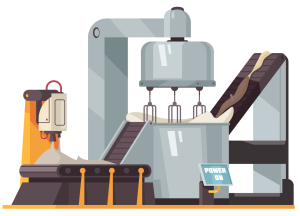Understanding the Health Check - Phase 9: Work Mix Management - Questions
Question One
Does the sales team ‘sell to the boards’?
Health Check Answer Options
- No, they sell as much as they can
- They are aware of the loads on the boards, but still tend to sell in waves/surges
- Yes, sales reliably sell to top up a smooth flow of jobs
Clarifications
- If you have not achieved Phase 9, your sales team try to hit sales target (revenue targets) by closing whatever is easiest.
- Often, this is achieved through discounting rather than value-selling techniques.
- As you progress with Phase 9, your salespeople will become aware of which products are better for the operational flow of the business and seek to sell these.
- Achieving Phase 9 means that the sales team recognises patterns that occur on the control boards, and from that deduce what they should sell, day-to-day, to maintain a high delivery performance of high profit generating services to customers.
- Salespeople are working out from the buffer boards the ideal sales mix to maximise both the short term and the long term-profitability of the business.
Question Two
Do you set sales strategy and targets based on buffer and bucket status records?
Health Check Answer Options
- No, they sell as much as they can
- We do strategically target high velocity jobs, but our targets are still volume-based
- Yes, our work mix steadily migrates towards higher margin faster money jobs
Clarifications
- Like in question 1, sales targets rule sales behaviour until Phase 9.
- Achieving Phase 9 means that you strategically analyse your sales mix and advance sales decisions and goals based on the mix of work that will maximise the ongoing profits of the business.
- Your people will be questioning whether you should continue to sell the same type of job, or change the job mix to improve the flow.
Question Three
Have you rated/classified job types and clients based on throughput velocity?
Health Check Answer Options
- No, we know the margins and profitability of jobs/clients, but not velocity
- We have a fair idea which jobs flow fast and which are sluggish
- We know the throughput dollar velocity of all job types (tput$/constraint minute)
Clarifications
- If you have not achieved Phase 9, you will either not be paying attention to how much margin a job or client contributes, or you will be aware and be prioritising jobs and clients with the highest margins.
- As you progress with Phase 9, you will have a sense of which jobs flow through your operations fast and which tend to be slow and get held up.
- Achieving Phase 9 means that you are aware of how much margin each job and client generates per minute of constraint time.
- You are aware that a ‘high-margin’ job might not be better than a ‘low-margin’ job if it uses more constraint time.
- You will make sales and scheduling decisions that seek to maximise the margin per constraint minute now and into the future.
Question Four
Do you have a ‘hole-filler’ process?
Health Check Answer Options
- No, what's that?
- Sort of; we can sell into gaps if we can see them coming far enough out
- Yes, we use price incentives to fill capacity gaps at short notice, without compromising overall pricing
Clarifications
- If you have not achieved Phase 9, you will be scheduling in work based on client commitment dates.
- Whilst your operations are busy, there is still a lot of variability in the profitability of the business from day to day.
- As you progress with Phase 9, you will become aware of delivery date commitment gaps in your forward demand queue and if significant you will reprioritise sales to fill these gaps.
- Achieving Phase 9 means you have a range of service offerings in the market that allow you, at short notice, to add jobs to the release schedule to top up gaps in the scheduled throughput velocity mix.
- Decisions around the use of hole-fillers are typically implemented with pricing or service incentives to customers without compromising your market-facing pricing guide and service terms.
- For example, spot prices, the price of something today has no impact on the price tomorrow (e.g. electricity).
- Decisions around the use of hole-fillers are typically implemented with pricing or service incentives to customers without compromising your market-facing pricing guide and service terms.
Question Five
Do you have regular reliable throughput in excess of operating costs?
Health Check Answer Options
- We have repeat business but we rely on sales to top it up every month
- Almost; we aren't really at risk as long as sales are quick to fill gaps
- Yes, our regular repeat business puts us into profit every month; we cannot really make a loss!
Clarifications
- If you have not achieved Phase 9, you may have repeat business that covers some of your regular operating costs, but you rely on sales to add new jobs to the schedule so that you are profitable.
- Cash flow and business survival are an ever-present concern.
- As you progress with Phase 9, you are building up your base of regular reliable throughput and your cash flow risks are reducing.
- Achieving Phase 9 means that at the start of the month you know whether you will be in profit or not for that month.
- Sales are replacing any lost customers and hunting out high throughput velocity jobs.
- The pressure is off selling to survive.
- You have repeat customers, choose your business terms, and are exploring offers that allow you to add additional value to your customers where that sale would boost your throughput velocity.
